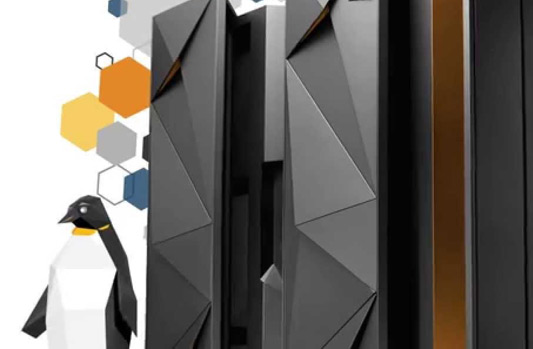
Take a moment to think like a CIO. Can you imagine that the CIO wants a reliable infrastructure, secure from hackers, that’s easy to install, easy to maintain and can quickly handle the businesses growth. Oh, yes, and economical.
Let’s take a peek at one of the hidden gems waiting to be discovered by you.
LinuxONE Reliability
LinuxONE is the most reliable hardware in the industry – bar none. According to Kathy Guarini, Vice President IBM LinuxONE Offerings, “Our platform is designed to provide 100% uptime for decades.” That’s DECADES, not months or years, to mean time of failure. How is this the case? Because the LinuxONE has been designed to eliminate any single point of failures, without affecting the application processing. Because there is so much redundancy in the server, the LinuxONE recovers in a split-second from failures, while the “call home” facility is notifying the service engineer. And, the application continues processing without missing a beat, right on this same hardware. Fail over isn’t necessary – instead the LinuxONE just keeps running.
LinuxONE Security
Security. Is that important to anyone? On this server, each chip has its own encryption processor called CP Assist for Cryptographic Function (CPACF). For even more encryption capabilities, an installed Crypto Express card can take that encryption off the chip and move the encryption to specialized processors. With these two facilities, both the data at rest and in flight can be encrypted. On the new LinuxONE Emperor II, the encryption processing is fast and is designed for massive scale data encryption. It’s designed to encrypt all your company’s data. Also designed for the LinuxONE server is Secure Service Containers facility, which protects the partitions from administrative authority tampering during installation and runtime.
LinuxONE Easy to Install
So, it arrives on the floor, now what? Roll up your sleeves and build some partitions. LinuxONE is easy to partition. The advantage of partitioning is that with more workload, there is higher resource utilization; therefore, the hardware becomes more economical. A GUI facility called Dynamic Partitioning Manager allows an administrator, with partitioning knowledge from other platforms, to quickly set up a partition on a LinuxONE server using a familiar graphical interface. For more information on Dynamic Partitioning Manager, see “Additional Blogs 1).” below.
LinuxONE Easy to Maintain
The Hardware is maintained by IBM. You will find the superior quality of technical service that IBM has long been known. As mentioned above, the LinuxONE “call home” feature keeps this platform running – for decades.
The operating system is a choice – which hypervisor and which Linux distribution. IBM has offered a proprietary hypervisor called z/VM. This hypervisor is geared for knowledgeable IBM Z system administrators. But, what if you are new to this platform? Here enters KVM. KVM is open source and is a dominant hypervisor on the x86 platform. It’s supported by Ubuntu and SUSE Linux distributions on LinuxONE. It’s easy to install and easy to maintain, which has led to its wide acceptance. For more information on KVM see “Additional Blogs 2).” below.
Does your shop use Docker? Well, LinuxONE is an excellent hardware platform for Docker containers. Docker is changing the industry by simplifying the set up and maintenance of virtualized servers. Set up your Docker containers stand alone, in a hardware partition defined using Dynamic Partition Manager, or run it under KVM. Either way, LinuxONE is the hardware platform for all your Docker containers. For more information on Docker on LinuxONE see “Additional Blogs 3).” below.
LinuxONE Quickly responds to Business Growth
Your company wants to install 100 new servers for an application. How do you plan to handle the capacity growth? LinuxONE servers can grow by turning on a newly purchased processor or memory at an attached hardware console managed through an Eclipse-like interface. So, buy the processor or memory, download an updated configuration from IBM, then turn it on. The LinuxONE Emperor II scales to 170 5.2 GHz processor. NOTE: That is the fastest processor speed in the industry! Memory scales to 32 TBs and is easily installed and turned on, non-disruptively. Growth can go from hundreds to thousands of Linux virtual servers or Docker Containers on one LinuxONE server.
LinuxONE Economics
As stated earlier in this blog, hardware partitioning improves the economics of the hardware server by improving the hardware utilization. Add to that a software virtualization hypervisor, such as KVM, leading to the Total Cost of Ownership vastly improved from other platforms. The LinuxONE server runs efficiently at 90-100% utilization – and will not fail. The hundreds to thousands of Linux virtual servers share the LinuxONE hardware resources. Network costs are reduced because the network is virtualized. Software licensing are on fewer cores, usually by a large magnitude, resulting in significant savings in software costs, year over year. In many cases, you may see millions of dollars in savings. Problem determination time and effort decreases on this more reliable, virtualized server. Power, cooling and floor space is reduced with the much smaller footprint of the LinuxONE server. We call this virtualization on steroids. This is the ideal hardware server for your company’s private cloud. For more information on Building a Business Case for Linux on IBM Z see “Additional Blogs 4).” below.
Next Steps
There is such a new excitement around the LinuxONE. Today, this server is the ideal hardware platform for both the proprietary and open-source software, as well as your company’s applications. Mainline can help build a Total Cost of Ownership for your virtualized or physical windows, UNIX or Linux servers. Contact us to uncover your savings, while running on the most reliable hardware in the industry.
Please contact your Mainline Account Executive directly, or click here to contact us with any questions.
Additional Blogs:
1) http://mainline.com/dynamic-partition-manager-z-systems/
2) http://mainline.com/kvm-ibm-z-sles-ubuntu/
3) http://mainline.com/linux-whats-with-docker-on-ibm-linuxone/
4) http://mainline.com/business-case-linux-z-systems/
